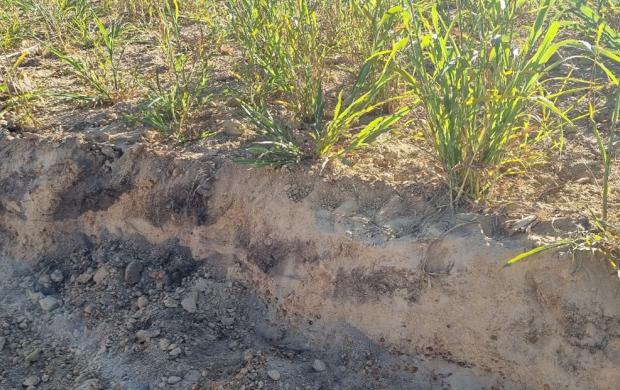Hacienda De Trigo Soil & Endemic Vegetation Carbon Project
Project Overview:
- Recipient: Hacienda De Trigo
- Location: Corrigin, WA
- Total funding: $140,000
- Project size: 1507 hectares
- Estimated ACCUs: 84,543
- Project methods: Reforestation by Environmental or Mallee Plantings – FullCAM; and Estimating soil organic carbon sequestration using measurement and models method.
The Hacienda De Trigo Soil and Endemic Vegetation Carbon Project combines a soil carbon project over 1307 hectares and a reforestation by environment plantings over 200 hectares on the recipient’s property 8 km northwest of Corrigin. The vegetation project focuses on land restoration by planting mixed, endemic species to increase biodiversity. The soil carbon project focuses on improving soil health through practices which also aim to increase soil carbon sequestration. New practises include very deep ripping, ameliorating soil with clay, compost and manure, and introducing mixed legume species fodder crops.

History of the project area
The designated project areas have an annual average rainfall of 370mm (since 1910). The soil types are typically sandy, with areas of gravel and subsoils that are typically duplex with low levels of clay content. There are areas of remnant woodland that have generally been fenced off to livestock and small areas of saline encroachment in some valleys. For the last 10 years, the land has been used for intensive broad acre cropping and livestock grazing, with sheep and cattle pasture. The project areas have been managed with a broadacre no tillage farming system with crop residue retention. The pasture phase has typically encompassed a single species cereal fodder crop.
Project details
The vegetation project focuses on land restoration by planting mixed, endemic species with the aim to sequester carbon and increase biodiversity. Site preparation includes fencing and weed control from 12 months prior to planting. The tree planting machine will be a sit-in Chatfield's tree planter with scalping and moulding discs and deep ripping tine. Infill planting will occur in the first 12 months after the initial planting and will continue throughout the project as required. The extent of area required for infill will dictate the method used, but it is expected this will be mainly using hand planters.
The plantings will provide multiple on-farm co-benefits, including increasing the biodiversity value of revegetation by linking endemic planting with existing tracks of remnant vegetation and improving resilience of agricultural practices by preventing wind erosion on vulnerable light sandy soils.
The soil carbon project aims to improve soil health and increase carbon sequestration through new practices to the farming business. These include very deep ripping, ameliorating soil with clay, compost and manure, and introducing mixed legume species fodder crops. The project estimates that it can increase soil organic carbon (SOC) levels from 0.8% to 1.3% in the top 30cm, which would generate 3.1 ACCUs/ha/year during the 25-year timeframe.
